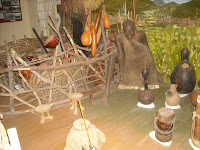There is this one time that I travelled alongside other students while in high school and since the journey was a long one, we had carried snacks with us. Just for thought, what do you think of when you see someone throw trash out of a vehicle window? Or even under their seat?
The inside of a vehicle is too small a space compared to the outside and yet while one is within the confines of the vehicle, the outside becomes like a thing of the past. Less is cared about it.
Often fruit peels are discarded through windows in moving vehicles, snack wrappers as well and if you happen to use roads where maize is roasted along the road, maize cobs also follow the same route.
The impact: I stay in a place where Maasai cattle cross the road more often than not and the nature of cattle is to walk as they eat or better still eat as they walk. This means chances of picking a polythene wrapper that was disposed irresponsibly are quite high and the aftermath, loss of a once healthy cow due to indigestion.
Pedestrians have their right of passage and to pass on roads that have not been used as garbage sites. A banana peel on the side of the road is more than enough to dangerously bring down a 90kg person.
Now to the environment in general; a single polythene bag or any other sort of wrapper in the midst of vegetation already makes that place unattractive. Undisturbed natural/artificial vegetation is good ‘food’ for the eye and should be taken good care of; what amount of cost is associated with it? Almost none.
Back to Matatus now, public service vehicles can be quite uncomfortable to travel in especially when those operating them care less about the cleanliness of the vehicle. Quite often will you board a mat and just as you try to make yourself comfortable your feet are greeted by some rubbish, more especially snack wrappers, thrown at the leg space. Irritating, isn’t it?
So recently I have made this observation which to some extend has really caught my attention. At least a dustbin in the several matatus that I have boarded. It has happened after a directive from National Environmental Management Authority (NEMA) in February to have all PSVs fitted with such. This means that whatever rubbish a passenger wants to dispose, it should be into the dustbin and not through the window. Kudos to these people whom we will ever need since we can’t all own personal vehicles.
It is quite ideal for people like me, yes me! Who carry with them used juice, water, or snack containers until they have found a dustbin long after alighting. Now that will be finding way into these strategically located dustbins in PSVs. (Send me a shout out if you have spotted them).
But there is another issue, there are some people who are so resistant to change and even with the presence of these dustbins they will still be pushing open vehicle windows and off goes the rubbish. It’s even worse if one is discarding a used chewing gum. What if it lands into another motorist’s vehicle that had the windows open? What if a pedestrian steps onto it and it sticks on to their shoe? What if? What if? ….
So about the journey we made while still in high school and several others, we ended up collecting all the trash that had been thrown all over the floor of the bus just to leave it clean. Then it crosses my mind that if we had a dustbin in the bus during our day long tour, we would have had it easier just carrying the dustbin and emptying it into the rubbish pit.
Enjoy trashless travel!





